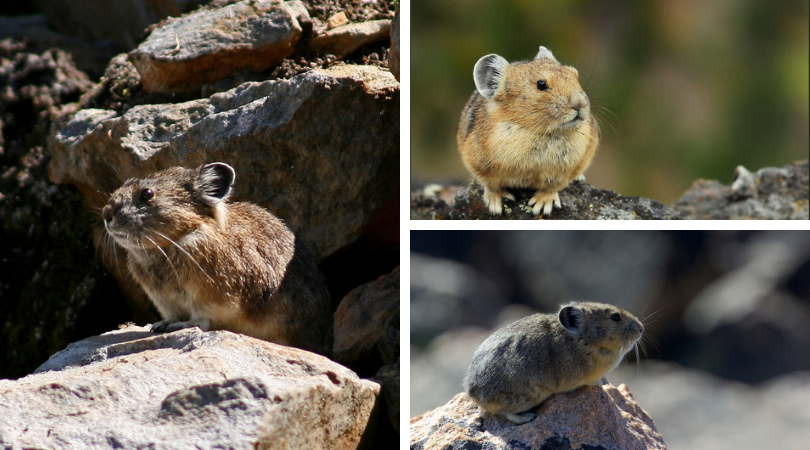American Pika- Ochotona princeps
The American pika lives in high elevation, cool climate areas west of the Rocky Mountains including places like Mount Rainer National Park. Typically found above the tree line, they live on rock faces and cliffs near the meadows. Pikas live in colonies and are territorial of their personal den. As herbivores, they eat grasses, tall wildflowers, and other vegetation that grows in high elevation climates. Because pikas do not hibernate, they collect and save their food during the summer to prepare them for limited resources in the winter. They lay their bounty out in the sun to dry out so it will not mold and be edible over winter.
Pikas are one of the few mammals that can survive their entire lives in alpine terrain at elevations above the tree line. Although pikas resemble a rodent-like species, they are not considered rodents and are more closely related to rabbits. Identify a pika by its short body, large round ears, and lack of tail. Mature pikas reach a size of about seven to eight inches (18 to 20 centimeters) in length. Their thick coat is brown-black and helps them to camouflage amongst the rocks and keeps them warm in the winter.
While not considered an endangered species, Ochotona princeps is thought to be at high risk of extinction because of increasing temperatures occurring due to climate change. Their thick fur can cause them to overheat if subjected to high temperatures over long periods of time and they can perish in several hours if subjected to moderate temperatures around 78 degrees Fahrenheit (26 degrees Celsius). Pikas live so high on the mountain that there is no way for them to retreat to cooler temperatures at higher elevations.
Want to learn more?
WDFW
US Fish and Wildlife


Recent Comments